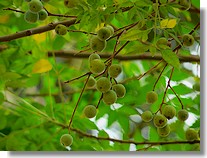
Here is some data obtained from the 'Environment and Society' class my daughter is taking at McGill University. The take away from it is: reduce intake of animal protein for better personal and planetary health!
Meat based diet of the Americans and most Middle Income Countries is is very detrimental to the environment:
Impacts:
Resource Use-
>1/2 the world’s cropland grows livestock feed
The land used to feed 1 meat eater could feed 20 pure vegetarians
Livestock consume about 38% of the world’s grain, and that consumption is growing twice as fast as people’s grain consumption. Pigs and chickens account for 2/3 of this consumption and dairy and beef cattle much of the remaining 1/3
>70% of the grain consumed in the US is fed to livestock, compared to only 2% in sub-Saharan Africa
Almost 2/3 of US cropland is used to produce livestock feed; only 2% is used to produce vegetables eaten by people
1/3 of the world’s fish catch is converted into fish meal and fed to livestock in MICs
About 40% of the commercial inorganic fertilizer used in the US is applied to cornfields used to produce livestock feed
Livestock use more than 1/2 the water withdrawn each year in the US, with most of this water used to irrigate crops fed to livestock and to wash manure away. The water used to produce the meat on a 1000 lb grain-fed steer would float a battleship
A person switching from a trypical meat-based diet to a pure vegetarian diet saves 5.3 million liters of water a year (enough to fill 2 olympic size swimming pools)
If everyone in the US switched to a pure vege diet, the country’s oil imports could be cut by 60%
Almost half the energy used in American agriculture goes into the livestock sector
Damage to the Environment:
About 85% of US topsoil loss is directly associated with livestock grazing
Overgrazing of sparse vegetation and trampling of the soil by too many cattle and other livestock is the major cause of desertification in arid and semiarid areas
Cutting down tropical forests in South America and converting them to short-lived pasture for cattle to raise beef for export to MDCs and for domestic use have destroyed vast areas of these storehouses of biodiversity
Pollution;
Cattle belch out 12-15% of all the methane released into the atmosphere
Some of the nitrogen in commercial inorganic fertilizer used to produce livestock feed is converted to nitrous oxide, another greenhouse gas
Nitrogen in manure excapes into the atmosphere as gaseous ammonia, a pollutant that contributes to acid deposition
Meat accounts for 55% of the pesticide residues in the US diet, compared to 6% from vegetables, 4% form fruits, and 1% from grains
Livestock in the US produce 125 tons of shit every second
Only about 1/2 of the livestock waste produced in the US is recycled in the soil. This leaves farmers with high fertilizer bills and livestock producers with high waste disposal costs.
Livestock wastes and sediment from land eroded by livestock account for about 1/2 the water pollution in the US
***Resolution= Sustainable production of meat:
Reducing the number of livestock animals in many areas
Producing crops and livestock together in areas where such diversified farming systems have disappeared and encouraging them where they survive
Raising the price of agricultural inputs (soil, water, fertilizer) and products to reflects their true environmental costs
Slowing and eventually halting human population growth









